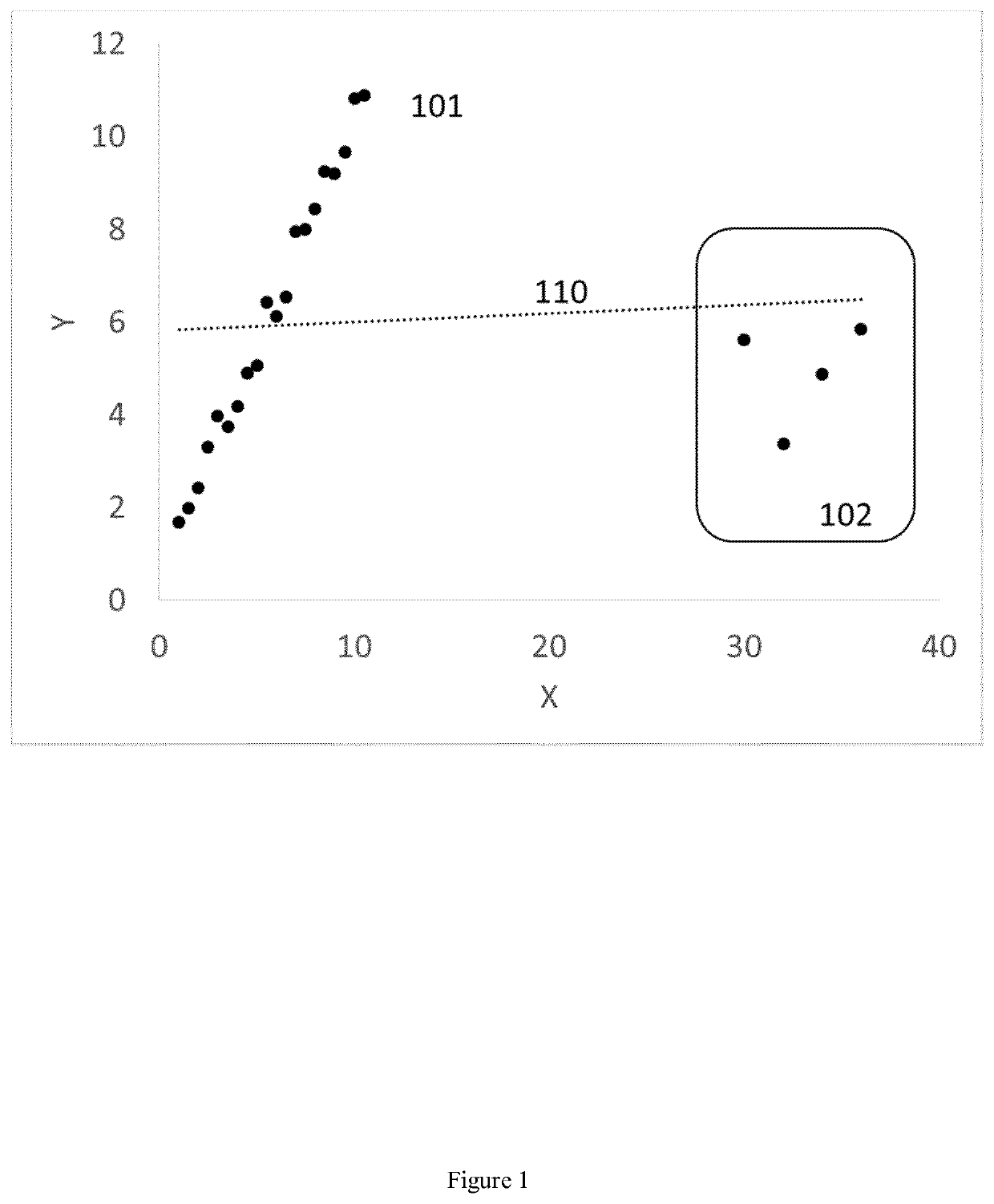Method for indicating a presence or non-presence of prostate cancer in individuals with particular characteristics
a prostate cancer and individual technology, applied in the field of prostate cancer detection and identification of various forms of genetic markers, can solve the problems of no organized psa screening recommendation, difficult identification of apca, and difficult screening of prostate cancer, so as to improve the ability to detect pca and save the society
- Summary
- Abstract
- Description
- Claims
- Application Information
AI Technical Summary
Benefits of technology
Problems solved by technology
Method used
Image
Examples
example 1
[0183]In a first example, the PCaGS_ex1 subgroup was defined as the following:
[0184]A PCaGS_ex1 member has one or both of the following:
[0185]Homozygote risk allele carrier of SNP with odds ratio from 1.2 to 2
[0186]Heterozygote risk allele carrier of SNP with odds ratio >2
[0187]The data set used in the present example comprised 4384 individuals from the STHLM3 study, and for each of the individuals the genotype of 254 different SNP (list 2 above), protein biomarker concentrations (of total PSA, free total PSA, free intact PSA, hK2, MSMB and MIC1), family history, age, prostate volume and digital rectal examination results were known. 308 individuals (7%) were members of the PCaGS subpopulation. Of these 308, 60 (19%) had Gleason 7+ cancer.
[0188]The cohort of 4384 did not include information about ethnic background, but was a randomly selected cohort of men with residential address in Stockholm aged 50-70 years at the time. Sweden is a multicultural society. In 2012 about 700 000 of ...
example 2
[0205]In a second example, the same data set as in Example 1 was used, and the PCaGS_ex2 subgroup was defined as an individual carrying at least one risk allele of rs138213197 (HOXB13). The distribution of individuals with a PSA value greater than 4.0 ng / mL is shown in Table 3:
TABLE 3Gleason Score 6 orGleason scoreBenigngreater7 or greaterPCaGS_ex2 group72616Non-PCaGS_ex2 group1151830439
[0206]This means that for individuals in the PCaGS_ex2 subgroup with PSA value greater than 4.0 ng / mL, the probability of having prostate cancer (Gleason score 6 or greater) is approximately 79% and the probability of having aggressive prostate cancer (gleason score 7 or greater) is approximately 48%. In comparison, individuals that are not members of the PCaGS_ex2 subgroup and that have a PSA value greater than 4.0 have a 42% probability of prostate cancer and a 22% probability of aggressive prostate cancer. In this particular case where the PCaGS_ex2 group exhibits a strongly elevated risk profile ...
example 3
[0209]In a third example, the same data set as in Example 1 was used, and the PCaGS_ex3 subgroup was defined by three SNPs: rs7818556 (with odds ratio=1.33), rs9911515 (with odds ratio=0.8813), rs620861 (with odds ratio=0.9359). These three SNPs were combined into a subset score variable according to the equation below and subsequently used for defining the PCaGS_ex3 subgroup:
[0210]Subset score=sum(*log(odds ratio))
[0211]PCaGS_ex3=individuals with subset score <−0.20
[0212]Where “sum” indicates that subset score is the sum of the product of number of risk alleles and the log(odds ratio) for the three SNPs. The Subset score value ranged from −0.39 to +0.57. The performance of the blood protein biomarker hk2 varied with subset score value: For individuals who had a subset score =−0.2; n=3433) hk2 had an AUC value of 0.59. AUC is a difficult-to-interpret value and even a seemingly small increase can be of clinical value. Under all circumstances, this example illustrates that it is benef...
PUM
| Property | Measurement | Unit |
|---|---|---|
| Fraction | aaaaa | aaaaa |
| Fraction | aaaaa | aaaaa |
| Fraction | aaaaa | aaaaa |
Abstract
Description
Claims
Application Information
 Login to View More
Login to View More - Generate Ideas
- Intellectual Property
- Life Sciences
- Materials
- Tech Scout
- Unparalleled Data Quality
- Higher Quality Content
- 60% Fewer Hallucinations
Browse by: Latest US Patents, China's latest patents, Technical Efficacy Thesaurus, Application Domain, Technology Topic, Popular Technical Reports.
© 2025 PatSnap. All rights reserved.Legal|Privacy policy|Modern Slavery Act Transparency Statement|Sitemap|About US| Contact US: help@patsnap.com

